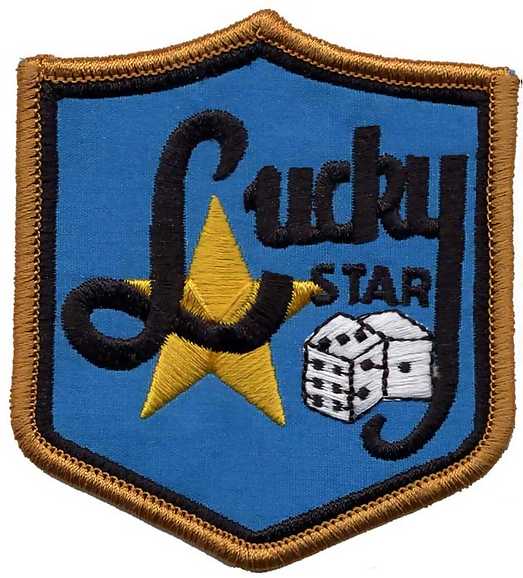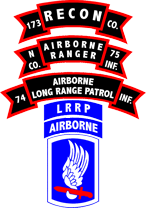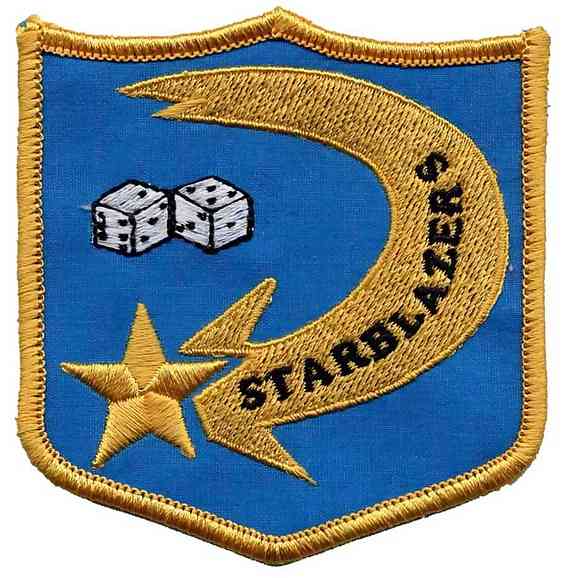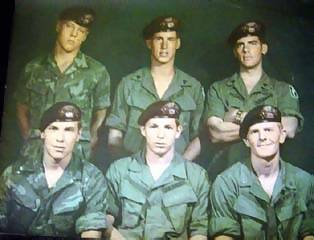“Operation Bright Light”
03/20/04
Written By:
Carl Millinder, Charley team N Ranger, 75th Inf. www.75thrra.com
&
Clifford White, 2nd Platoon 61stAHC, 1ST Avn. Brigade www.61ahc.org
NOVEMBER RANGER, 75th INF - 61st AHC, 1STAVN BRIGADE



A few years ago I met Carl Millinder on the Internet while searching for pilots I flew with and trying to make some contact with people I had served with. Carl responded to one of my inquires and we compared notes. Both of us were in country in 1971, Carl with the N Rangers 75th Inf. at LZ English, and myself with the 61st AHC at LZ Lane. I asked if he remembered a mission in Feb. of that year where the Rangers were lifted in to recover some American POW’s. Carl said his team was on that mission. We have kept in touch and have decided that this mission needs to be recorded as a part of both units’ history.
This mission “Operation Bright Light” took place Feb. 1971. “Bright Light” was a code word used to designate operations and intelligence relating to POW’s and down aircraft. To have some idea of the impact of the mission and why I remember it so clearly, first this was a historical mission, or at least it would have been if it had been successful. And secondly, I was on my second tour and the new platoon commander for 2nd platoon. My first tour was in 1968 with Casper Aviation Platoon HHC 173rd ABN. I took some comfort with being familiar with the Area of Operation and supporting the 173rd, but not all that familiar with my new position, or comfortable with being the new guy (FNG) in the unit.
Being woken up at midnight and being told that you have an immediate flight to LZ English, and it is your first mission after the in country check ride the day before, causes some excitement. On the way to operations to find out whom I was flying with and what the mission was it very quickly became apparent that the whole company was awake. I found out that both slick platoons “Lucky Star” and the gun platoon “Star Blazers” were going to LZ English, and we would be briefed on arrival. My AC knew about the mission and was already on the flight line, pre-flighting the ship and as far as he was concerned I was late. Not a great way to start. I would be flying right seat “peter pilot (PP)” in the lead ship with, to the best of my memory CW2 Hahn, one of the senior Aircraft commanders.
As memory serves, we had two flights of five ships each, four “M” model gun ships. We landed at LZ English on the Crap Table about 2AM and the AC’s went in for the mission briefing while the rest waited. Not knowing what to expect made the waiting seem a lot longer than it really was. Some of the crewmembers slept and some ate, I could do neither. We were briefed on the AC’s return.
Our mission was to pick up the 75th Rangers at LZ Pony and depart at such time so we would land at first light in an abounded 1st Cav. firebase where an estimated 6 to10 American POW’s were being held by an unknown number of NVA. We would be landing at first light under the cover of the Star Blazers and a heavy drop of CS gas canisters dropped by a Casper ship. Casper also had the Command and Control (C&C) for the mission. After the initial insertion we were to return to Pony and load up the next lift of Rangers who were being held in reserve if the first lift ran into serious trouble. If there was no trouble, and the POW’s were recovered we were to return and lift out the first lift.
We were to follow the river West from LZ Pony past LZ Abby turning North at an area called “crows foot’ and continue to follow the river. The flight was low level. North on the river there is a large waterfall, about 200-ft. high. I had seen it once before in 68. As we climbed to get over the waterfall we were to continue to follow the river and keep climbing to an altitude so that we could see the LZ, which was to the South of the river. The waterfall was our IP.
The final destination was about 24 miles north of An Khe and about 14 miles West of LZ Pony. I don’t know the last time Americans had been in this area. It could have been at least 4 years, truly Charley country.

Picture by Ken Thomas
Casper Platoon’
Recon pictures of the abandoned LZ showed old bunkers, down trees and stumps. There were two clearings separated by a row of trees. The first flight would land in the clearing to the right (West Side) and the second flight would simultaneously land in the clearing to the left. There were two large hills, one on the East and the other to the West. They were old volcano vents and were nick named “Witch’s Tits”. Recon pictures also showed the possibility of machine gun positions on each hill. The most common heavy machine gun used by the NVA was the 12.7-mm (51 cal.). If they were really there they would be able to see us coming and we would be landing below them in a clear line of fire. The NVA typically set the 12.7 up in a triangle so there would have been a third gun that had not been found. First light and coming in fast using surprise would be the only chance to get past the guns and in and out of the LZ before any anti-aircraft guns could be fired. That is if the guns were there or the crews were still asleep.
We were issued gas mask to use during the initial insertion. They were designed for air- crews so had to be plugged into the intercom/radio and the can/filter was on a long hose and strapped to your body or leg. The lens were a thin plastic and hard to see through and in my case there was a wrinkle which distorted the view, such that I could either see two trees where there was one or see none at all with out moving my head back and forth. I don’t know who was responsible for the gas mask, but there was only enough for two per ship. There were 4 crew per ship and with only two gas masks there was cause for concern. There was no way the mission would be delayed or cancelled, so each ship decided who would wear the mask. In our case the decision was that I would wear the mask along with the crew chief. The AC would fly the ship into the LZ and as the gas came into the ship and he was affected by it I would take over and fly out. I think Mr. Hahn would have preferred a more experienced pilot with him in the lead ship, however he never said so.
The LZ was tight so to fit all 5 ships in we had to crowd forward so our blades were over lapping an old bunker. It was over grown and we didn’t see it till just before we set down. There was an opening in the bunker immediately to my front about 20 feet away. Our orders were not to return fire to prevent accidentally hitting any of the POWs, despite the order I had my .38 out and was ready to shoot thorough the windscreen if I saw any movement in the bunker. The time in the LZ was very short, the crew chief said we were clear, which meant that all the Rangers were out. We came to a hover and the AC radioed the flight that “lead is up” and I heard trail respond that “the flight is up”, there was no other radio talk. As planned the AC said, “you’ve got it”. Excited and still new I pulled pitch, and forgot the left pedal. We listed right and were going out of the LZ sort of side ways, I heard someone, maybe the crew chief or the AC in the intercom yelling left peddle, which solved our problem.
There were no rounds fired, no one was home. Back at LZ Pony we were waiting for information on our next step. Fly in the reserves, or fly in and pick up the POWs and the Rangers. The call came that there were no POWs and that we were to fly back and extract the Rangers. This was a major disappointment, and the reason why no rounds were fired. Our good fortune of not having a hot LZ was very bad news for the POWs. They had been there, and had been moved as we were coming in.
Carl told me that they found the cages they had been kept in. E-mail from Carl, “We knew there were plenty NVA that was supposed to be there. So we were a little concerned. Wrote the goodbye letters and shit. Sorry we didn't find the guys. We knew they were close.”
Carl also sent me this: “As I remember the mission, was to have four ranger teams inserted at the Four Corners of a grid square. We were told of sighting of American POWs. The location was never told to us. We practiced the raid for about a week. I remember it was a long flight and we still didn't know where we were going. The piece of map we were issued indicated a waterfall where we would escape and evade to if we had to. About a minute out the grid square would be saturated with CS fired from the cobras. We donned the protective mast and went in. About 20 to 30 minutes after the insertion Charlie team discovered bamboo cages, hoochs. Elevated bins that stored rice. The campfires were still hot and fresh human feces were found. No men were seen. No enemy contact was made. They were there, probably under ground.
I think the mission on the ground lasted about an hour. We were picked up, flew back to English and debriefed. We still never knew where we had gone.”

Charlie team N Ranger, 75th Inf.:
Standing left to right…Thomas Oulett, Carl Millinder, and Donald Valencourt
As Carl and I communicated I was surprised to find out that the Rangers didn’t know where they were going. Plus that they were expecting to be inserted at the corners of the grid, however there was only one LZ, which would fit in the flights or a single ship and that, was in the old firebase. I was also surprised to find out they had trained for the mission and we had almost no notice.
In one of his e-mail messages Carl said:
“I had a guy working on an oil rig 20 years or so ago that was a POW. I told him about the mission, and the water fall. He told me he was one of the guys that built the bridge across the river. I don't remember his name but we called him Snuffy. I didn't remember a bridge at the time. But, I see it in the picture. He told me they had moved underground just before the gas hit. Wow. Gives me chills.”
We are left to wonder what the outcome was for the POWs. The Paris agreement for the release of prisoners was that they all were to be released in Hanoi to the Red Cross. Which meant that these POWs and all captured in the South had to walk north, through very rough land, heavy bombing, and with poor food and poorly trained guards. The wounded and sick would have a particularly difficult time surveying. If they could not travel they would be shot and left on the side of the trail.
I would like to believe that the POWs made it North and were released. However we may never know that for sure. Carl’s experience of meeting “Snuffy” would leave me to hope so.
Carl’s and my memory needs some help, so if anyone else in the 75th or the 61st that remembers this mission would like to add to or correct this narrative please get a hold of either one of us.
I had most of a full tour left, and as the skills of the peter pilots improved and the current AC’s rotated back to the states we became Aircraft commanders. From my first tour with the 173rd ABN I had gained a great deal of respect for the LURP, which they were called in 68, but in 71 I got to fly more missions either inserting or extracting the Rangers. I was always in awe of their missions and how they carried them out. The Rangers should know when we knew we were going to be flying N Rangers that the 61st took the missions very serious. The best pilots were assigned, with one of our better ships. These missions always seemed to prove challenging. However most of the time we would be assigned to fly C&C for one of the Battalions and during the day we would find out that a Ranger team needed to be inserted or extracted. At one time or another all our pilots got to fly these missions. Insertions were planned and for the most part went well, however extractions could be the most challenging and some times were on a TAC-E (tactical emergency) so the closest ship to the team would be sent in. These missions were the bases for many war stories. Not to blow any smoke but I can’t think of anyone else that I would rather be flying than the Rangers; they were the most professional troops you could work with. They knew what they were doing and we knew if the “fit hit the shan” you couldn’t be with a better group.
